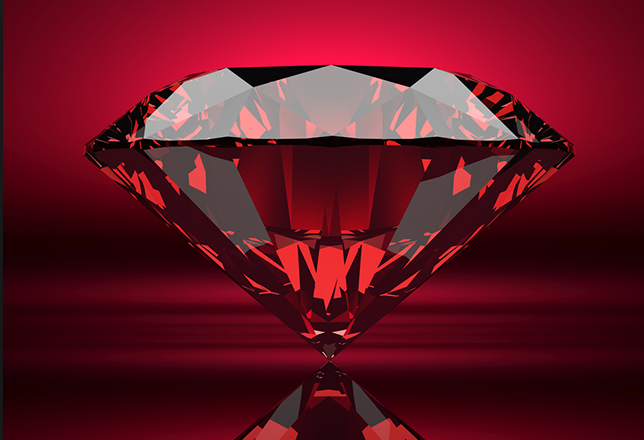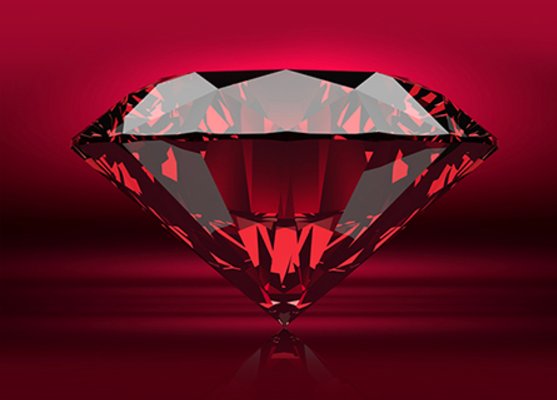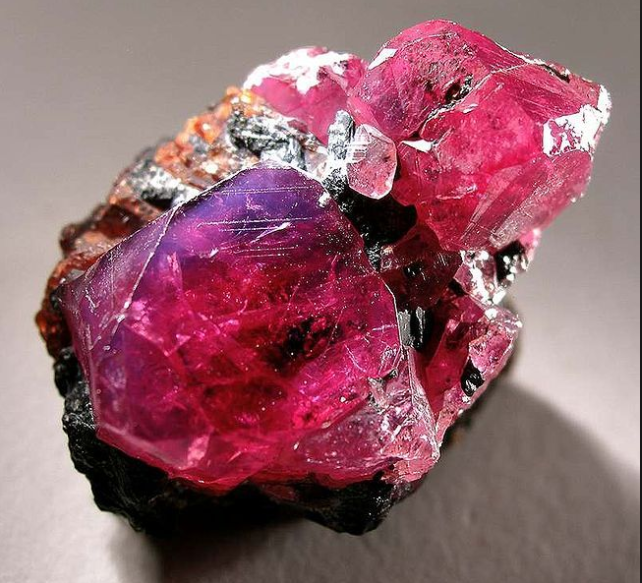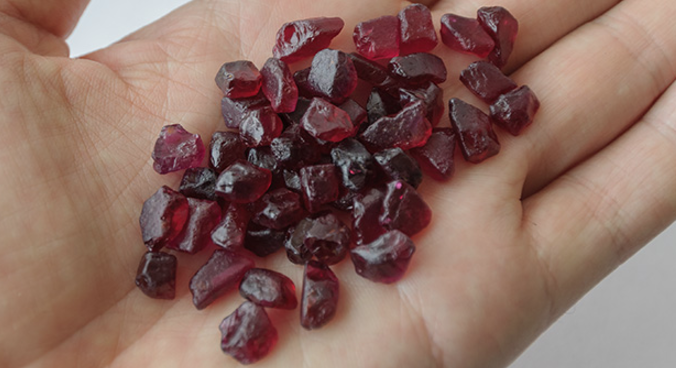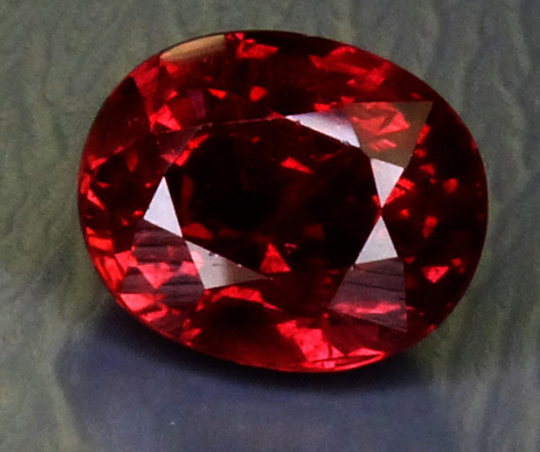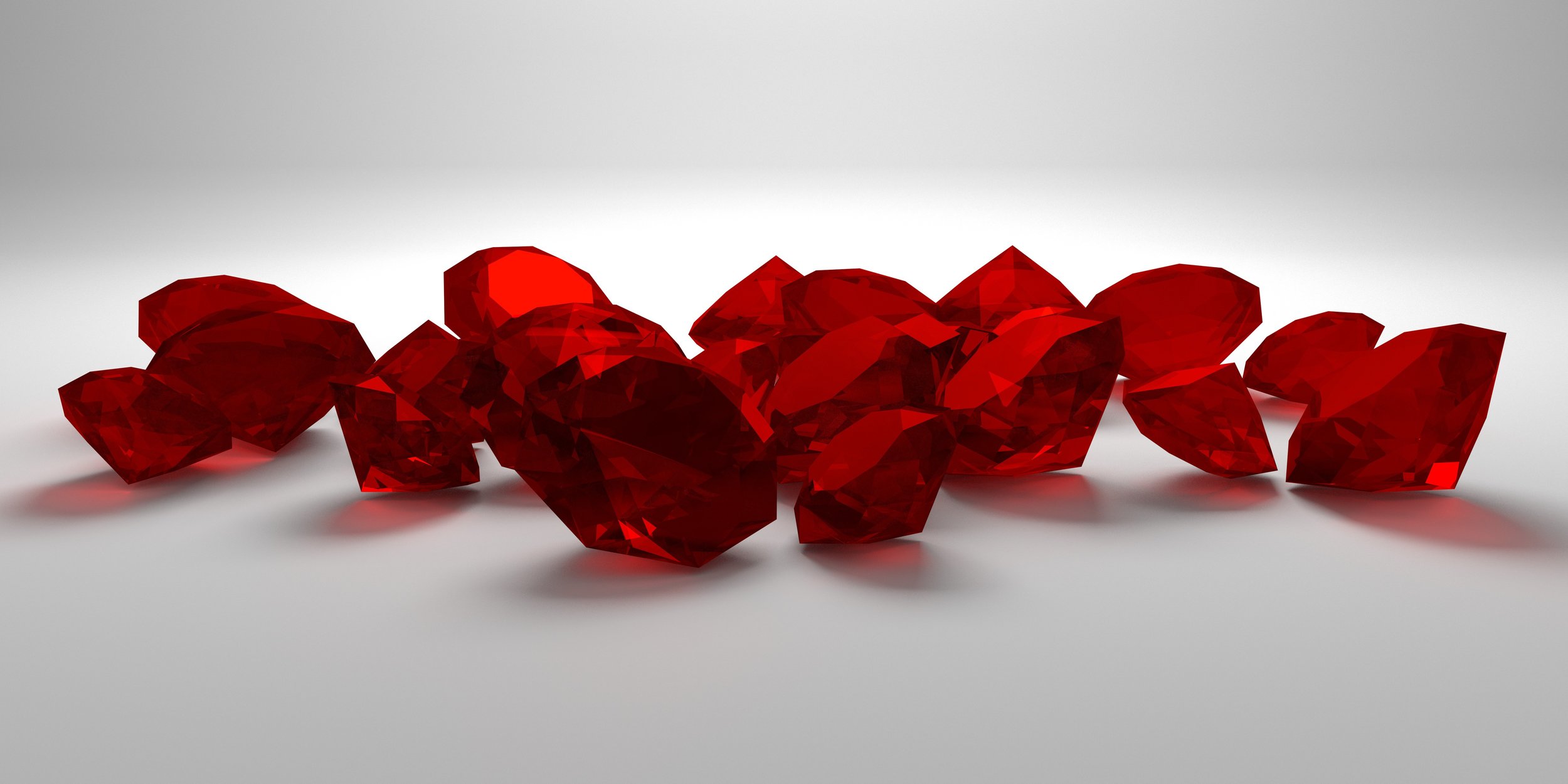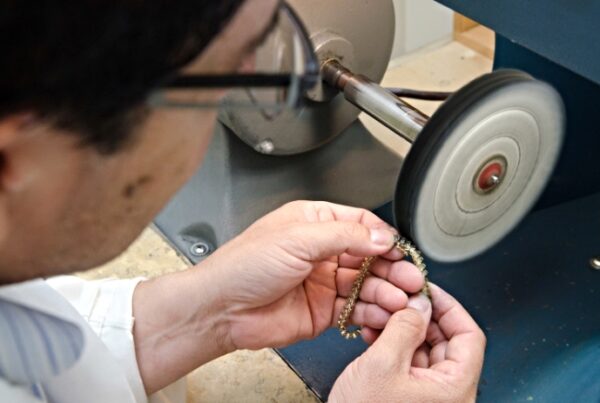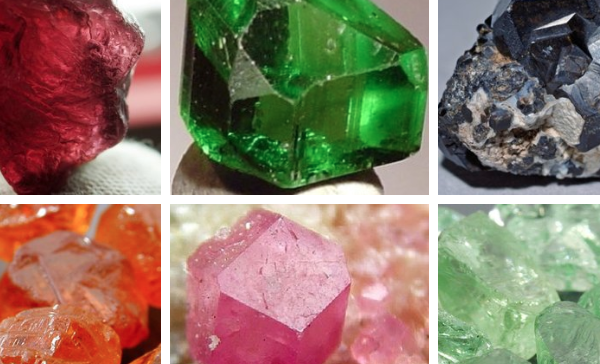The world’s irresistible Ruby, primary birthstone for the month of July, is considered one of the most beautiful of the precious gems. With its rich, deep-red color, rubies have been prized throughout history. They have played a major role in the crown jewels of many countries. Revered since ancient times, the ruby gemstone is considered to be symbol of vitality, passion, and protection.
The word “ruby” originated from the Latin word, for red – “rubeus.” In Sanskrit, “ruby” comes from ratnaraj meaning “king of precious stones.”
Rough ruby crystal
Ruby is the red variety of the mineral corundum when it is colored by chromium. Chromium gives ruby its red color and also causes a condition called fluorescence. Florescence causes the fiery red gemstone to glow from within. Although garnets have often been confused for rubies, even with royalty, Garnets, however, do not have the ruby’s quality of an inner glow.
Raw rubies
Ruby measures 9 on the Mohs scales of hardness and durability. Diamond is the only gemstone harder than ruby. Its strength and fluorescence have made the synthetic and natural rubies valuable not only for jewelry, but also for making watch parts, medical instruments, and lasers.
Burmese ruby
The finest rubies have been found in Myanmar (Burma.) Rubies mined there have been prized for their deep blood-red color known as Pigeon’s Blood rubies. Now most rubies from this country are heat treated to bring out a saturated red color. Other ruby deposits exist in Vietnam, Thailand, India, parts of the Middle East, East Africa, and the United States.
The world’s most expensive ruby is a Pigeon Blood red ruby which was mined in in Myanmar (Burma.) This ruby is named the Sunrise Ruby and weighs 25.6 carats. Set between two 2+ carat diamonds, in 2015 this gem sold at auction for almost $30 million dollars.
Because of their fiery color, throughout the ages rubies have been believed to amplify energy, heighten awareness, instill courage, and bring about success in wealth, love, and battle. They are also believed to increase motivation and truthfulness.
Asian cultures have a history of favoring rubies for their mystical powers. Historical records indicate that rubies were traded as early as 200 B.C. along China’s famous North Silk Road. Chinese royalty buried rubies beneath their building foundations to secure good fortune.
Cut rubies
In Burma, warriors implanted rubies under the skin to give them protection in battle. Ancient Hindus believed that they would return in a next life as emperors by offering rubies to the god, Krishna.
Like diamonds, rubies are evaluated using the 4Cs, color, cut, clarity, and carat weight, along with the geographic source. The greatest value is assigned based on the richness of its red color. The finest color is a vibrant purplish red. Rubies that range towards brown, orange, or pink are considered less valuable.
Almost all rubies are rutilated (having inclusions.) These rutile inclusions are called “silk.” Rubies with good transparency are more valuable. Natural rubies with the desired qualities are many times more valuable than treated gemstones Lower quality rubies are heat treated to improve color and minimize inclusions..
Rubies are used to celebrate July births, as well as 15th and 40th wedding anniversaries. Because of their association of rubies with passion and love, they are often used in engagement and wedding rings. Whether purchased for its beauty in jewelry, to celebrate births and anniversaries, or for its mystical powers, the Ruby is incomparable in its exquisite features and desirability.
